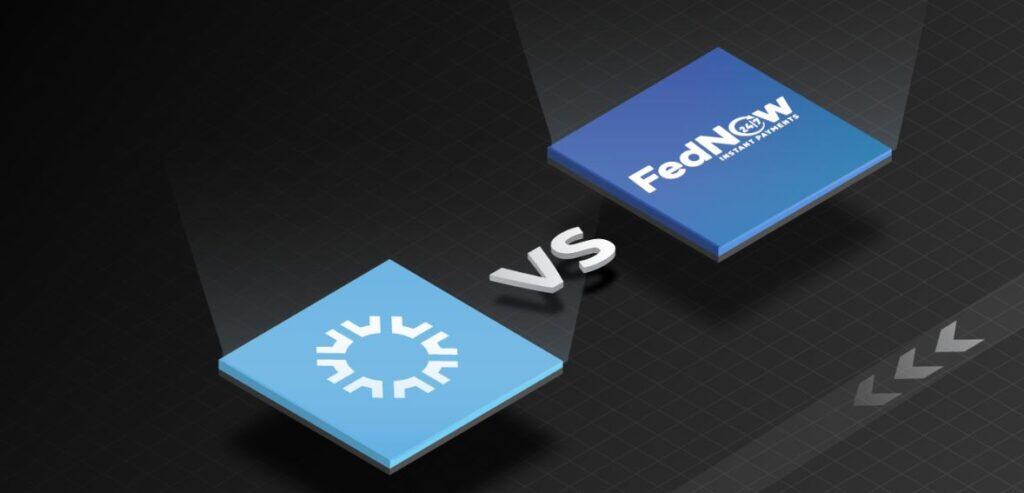
By alphacardprocess May 28, 2025
In the US, the payment environment is changing significantly. Businesses have been using card payments extensively for decades, which has led to high interchange fees, chargebacks, and delayed settlements. These established conventions are being called into question with the introduction of FedNow and RTP (Real-Time Payments) rails.
Businesses that rely heavily on cards in particular need to comprehend the implications of real-time settlement for their operations, clientele, and future expansion. This article explores FedNow and RTP in detail, emphasizing their features, advantages, and consequences for companies that depend on card-based transactions.
Understanding Real-Time Settlement: The Foundation of FedNow & RTP
As the name implies, real-time settlement is the instantaneous transfer of money between the sender and recipient accounts. FedNow and RTP enable immediate payment processing and confirmation—24/7, 365 days a year—in contrast to conventional ACH or card settlement systems that might take days. This feature increases operational efficiency, decreases reconciliation problems, and improves cash flow.
The Clearing House (TCH) created the RTP network, which has been in use since 2017 and can handle transactions up to $1 million. The Federal Reserve launched FedNow in 2023 as an addition to RTP that expands the reach of real-time payments to smaller financial institutions. Both systems are a good substitute for conventional card rails since they guarantee quicker and more secure transactions.
The Card Conundrum: Why Businesses Should Look Beyond Plastic
A complex web of card network fees, chargebacks, and multi-day settlements ensnares card-heavy industries like retail, hospitality, SaaS subscriptions, and professional services. What they usually encounter is as follows:
- Exorbitant Interchange Fees: Visa and Mastercard impose a percentage fee on each transaction, which can add up to hefty monthly costs.
- Chargebacks: Disputed transactions can cause lost revenue and damage to one’s reputation in addition to delaying funds.
- Settlement delays : The majority of card transactions take one to three business days to settle, which causes irregularities in cash flow.
By allowing direct account-to-account (A2A) payments without using card networks, real-time payment rails present a chance to alleviate these issues.
FedNow vs RTP Rails: A Comparative Look

Despite the fact that both systems offer real-time settlement, they cater to somewhat different areas of the financial ecosystem: The Federal Reserve runs FedNow, which seeks to provide widespread accessibility, particularly for smaller banks and credit unions.
The Clearing House-run RTP already serves the majority of the leading financial institutions, but smaller banks might find it more difficult to use. Only in terms of coverage does the distinction matter to businesses. Depending on their bank’s involvement, the majority of businesses will probably gain from having access to either or both systems.
Impact on Cash Flow and Liquidity Management
Improved liquidity is among the most obvious and quantifiable advantages of utilizing real-time rails. Businesses can get money in a matter of seconds rather than having to wait for batch settlements or ACH processing windows. This:
- Enhances working capital management skills.
- Facilitates quicker service delivery or order fulfillment.
- Allows hourly employees or gig workers to receive their paychecks in real time.
Instantaneous reallocation of funds to marketing, payroll, or inventory is particularly advantageous for card-heavy businesses with thin margins or seasonal cycles. Instantaneous reallocation of funds to marketing, payroll, or inventory is particularly advantageous for card-heavy businesses with thin margins or seasonal cycles, highlighting the broader impact of fast, reliable payments on small business growth.
Lower Transaction Costs and Bypassing Interchange

In card-based payment systems, exchange fees—which typically range from 1.5% to 3.5%—are an unavoidable evil. These expenses add up when companies handle millions of transactions a year. By enabling A2A payments without the need for card issuers, RTP and FedNow do away with interchange.
Although banks or platforms may still charge a small fee for RTP and FedNow transactions, these fees are usually far less and more predictable than those for card interchange. These cost savings can be passed on to customers in the form of competitive pricing or reinvested.
Greater Payment Certainty and Reduced Fraud Risks

Particularly in e-commerce and card-not-present (CNP) settings, card payments are susceptible to fraud. Unauthorized use, chargebacks, and friendly fraud are ongoing dangers. Systems for real-time payments lower these risks in a number of ways:
- Since a payment cannot be undone once it has been made, fraud liability is decreased.
- There is more stringent identity verification at the point of payment.
- Metadata and transaction history increase the transparency of fraud detection.
- This change may lessen the need for chargeback mitigation services and fraud-related losses.
Particularly in e-commerce and card-not-present transactions, fraud risks remain high due to unauthorized use and friendly fraud.
Operational Efficiency and Easier Reconciliation
Backend operations are streamlined by real-time settlement. Businesses that accept traditional card payments must reconcile transaction logs and batch deposits, frequently days apart. Every payment is settled separately and instantly with FedNow and RTP, bringing deposit records and sales activity into line.This minimizes human error, increases reporting accuracy, and drastically cuts down on the amount of time spent on accounting and reconciliation.
In terms of financial visibility, it’s revolutionary for CFOs and finance teams. Smooth Interaction with Contemporary Payment Systems Payment service providers (PSPs), neobanks, and fintech platforms are increasingly supporting FedNow and RTP. Real-time payments can frequently be integrated by companies using contemporary point-of-sale (POS) or e-commerce systems without requiring a complete infrastructure redesign.
For instance:
FedNow integrations are being investigated by Shopify and Stripe. It is anticipated that Square and PayPal will introduce comparable features. This
Consumer Experience and Instant Gratification

Customers expect everything to happen instantly, including payments, in the era of Amazon and Uber. Using RTP or FedNow, clients can:
- Get your money back right away.
- Real-time payment for subscriptions or invoices.
- Prevent pending transactions or card holds from causing delays.
This increases client satisfaction and fosters confidence. Real-time payment options can boost follow-up engagement and appointment scheduling for service-heavy businesses like consultants, personal trainers, and chiropractic clinics.
Challenges to Adoption and Practical Considerations
FedNow and RTP have drawbacks despite their benefits:
- Bank Participation: At the moment, not all banks offer support for both systems.
- Onboarding Complexity: Technical resources may be needed to integrate new payment flows.
- Customer Behavior: It may take some time for customers to switch from cards to A2A.
- Absence of Dispute Resolution: Businesses are more obligated to settle disagreements with customers directly when payments are irrevocable.
These obstacles should, however, lessen as adoption increases and best practices change
Strategic Use Cases for Card-Heavy Businesses
Companies that use cards frequently can make strategic use of RTP/FedNow:
- Subscription Services: Provide real-time A2A payments at a discounted rate.
- B2B Invoicing: For high-value transactions, take business clients’ payments in real time.
- Retail Promotions: Offer immediate discounts to encourage in-the-moment payments at the register.
Real-time rails can enhance and optimize the overall payment strategy, even if card payments continue to be a component.
Cross-Border Payments and Future-Proofing Through RTP Infrastructure
The difficulty of cross-border payments increases as companies expand outside of their home markets. These transactions have historically been beset by high fees, delays, and challenges with reconciliation. On the other hand, RTP and FedNow’s infrastructure offers an intriguing starting point for long-term solutions to these problems.
FedNow prioritizes scalability and extensibility in its design philosophy, despite its current focus on domestic transactions within the United States. FedNow’s rails have a good chance of being incorporated into international frameworks in the future, particularly as international banking standards move toward ISO 20022 messaging, which FedNow and RTP already support.
This is a crucial factor for card-heavy companies hoping to grow internationally. Early adopters will already have the technical architecture in place to make a smooth transition if the real-time payment infrastructure changes to support international settlements. In addition to providing possible interoperability with cross-border networks like SWIFT GPI or the European SEPA Instant, this lessens reliance on sluggish SWIFT-based wire transfers.
Furthermore, APIs that facilitate automated settlement instructions, smart invoicing, and protocol-level fraud detection are increasingly being integrated with RTP systems. These are not merely enhancements; rather, they constitute a framework that is future-proof and adapts to the changing nature of commerce. Businesses that rely heavily on cards now have the strategic flexibility to expand globally with fewer obstacles thanks to investments in this infrastructure.
Preparing Your Business for Real-Time Payments
Here’s how businesses can prepare:
- Talk to Your Bank: Ask if they support FedNow or RTP and what tools they offer.
- Update Your Payment Stack: Ensure your PSP or platform can integrate real-time rails.
- Train Staff: Help your finance team and support agents understand the new flow.
- Educate Customers: Explain the benefits of real-time payments and build trust around new options.
- Monitor KPIs: Track payment speed, error rates, and customer adoption to refine strategy.
Conclusion: The Future is Instant
In the United States, FedNow and RTP are changing the fundamentals of how payments operate. This is a strategic shift toward more effective, safe, and customer-friendly operations for card-heavy businesses, not just a way to cut costs. The advantages of adoption—lower costs, quicker cash flow, enhanced security, and higher customer satisfaction—are strong, even though some adjustment may be necessary.
Real-time rails are the way of the future for business, not just a fad. Tomorrow’s leaders in financial agility, operational effectiveness, and customer trust will be forward-thinking companies that welcome this change today.